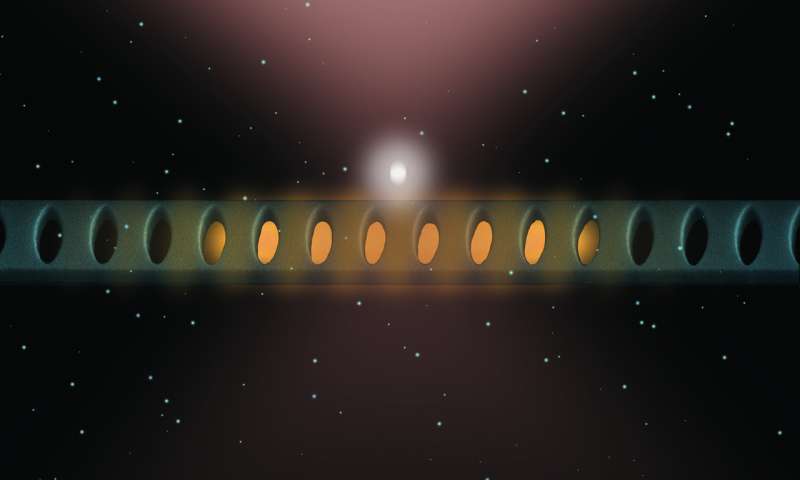VIENNA, Dec. 19, 2018 — A new device that can measure and control an optically trapped nanoparticle with extreme sensitivity has been developed by researchers at the University of Vienna and the Delft University of Technology. Although this approach has been used before with trapped atoms, the researchers said they are the first to use it to precisely measure the motion of an optically trapped nanoparticle made of billions of atoms. The device could help scientists measure and study nanoparticles at a scale governed by the rules of quantum mechanics.
“We know that the laws of quantum physics apply on the scale of atoms and the scale of molecules, but we don’t know how large an object can be and still exhibit quantum physics phenomena,” said professor Markus Aspelmeyer. “By trapping a nanoparticle and coupling it to a photonic crystal cavity, we can isolate an object that is larger than atoms or molecules and study its quantum behaviors.”

Researchers have used a light-guiding nanoscale device (blue/green structure) to measure and control position of a nanoparticle (white blur) in an optical trap (reddish light). This is possible because the light guided in the photonic crystal cavity is influenced by the motion of the particle. Courtesy of Lorenzo Magrini, University of Vienna.
The team used a photonic crystal cavity to monitor the position of a nanoparticle in a traditional optical trap. The cavity was narrower than the wavelength of the light entering it. Consequently, when light entered and traveled down the cavity, some light leaked out, forming an evanescent field.
When a nanoparticle was placed close to the photonic crystal, the evanescent field changed. This, in turn, caused measurable changes in how the light propagated through the photonic crystal. “By examining how light in the photonic crystal changes in response to the nanoparticle, we can deduce the position of the nanoparticle over time with very high resolution,” said researcher Lorenzo Magrini.
By optically trapping a 150-nm silica particle and placing it in the near field of the photonic crystal cavity, the researchers achieved tunable single-photon optomechanical coupling of up to three orders of magnitude larger than what has been reported previously. Efficient collection and guiding of light through the nanophotonic structure resulted in a per-photon displacement sensitivity that was increased by two orders of magnitude compared to conventional far-field detection.
The new device can detect almost every photon that interacts with the trapped nanoparticle. This helps it achieve extremely high sensitivity while using less optical power than other methods.
The researchers are now working to substantially boost the device’s sensitivity so measurements can be performed under stronger vacuum conditions, to further isolate the particle from the environment. “This would allow us to use the interaction of the cavity with the particle to probe or even control the quantum state of the particle, which is our ultimate goal,” Aspelmeyer said.
In addition to studying quantum mechanics, the new device could be used to precisely measure acceleration and other forces that might arise in microscopic length scales.
“In the long term, this type of device could help us understand nanoscale materials and their interactions with the environment on a fundamental level,” Aspelmeyer said. “This could lead to new ways of tailoring materials by exploiting their nanoscale features.”
The research was published in Optica, a publication of OSA, The Optical Society (https://doi.org/10.1364/OPTICA.5.001597).